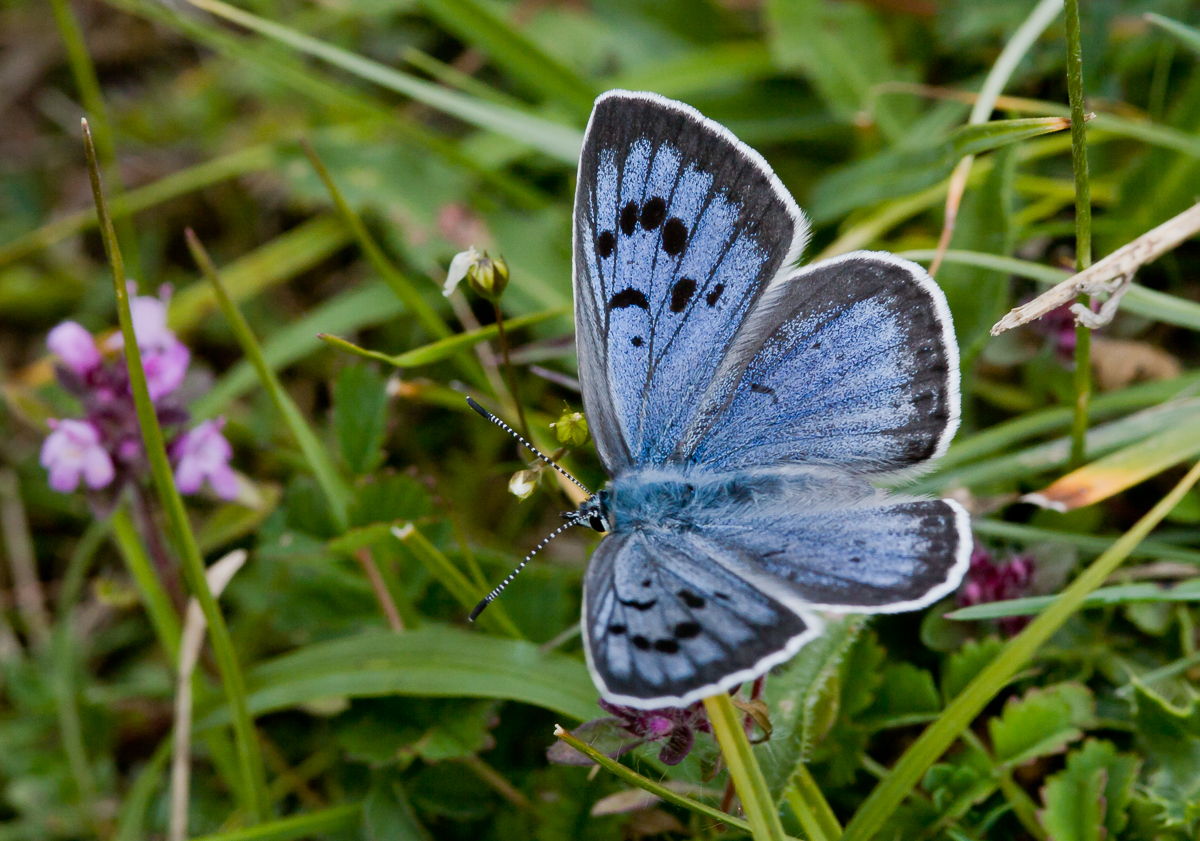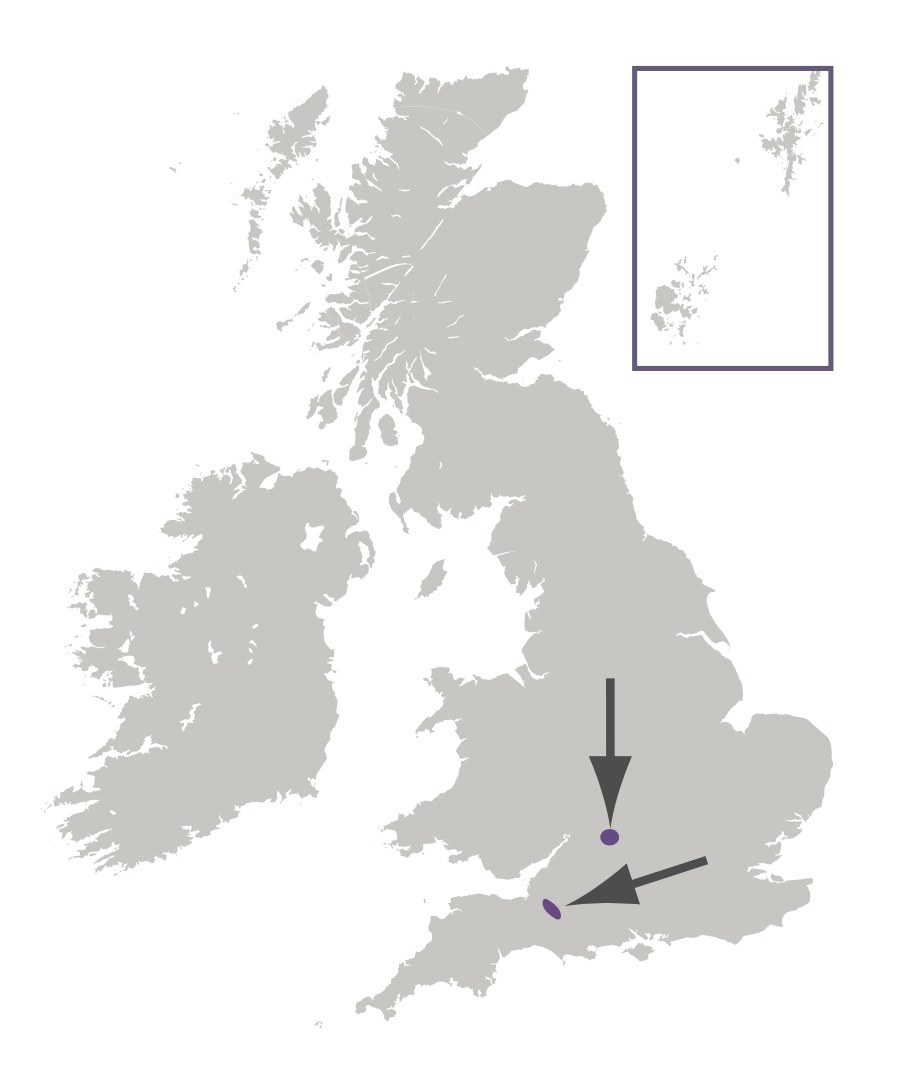
Photo © Peter Eeles
This butterfly was first recorded as a British species in 1795 and, even then, was considered a rare insect. Due to the loss of suitable habitat, the endemic subspecies of Large Blue became extinct in the British Isles in 1979, the last site being on Dartmoor in Devon.
This magnificent insect has since been "brought back from the dead" through the dedication of several conservation organisations and many individuals. After its extinction in the British Isles in 1979, the Large Blue became the subject of a highly-organised reintroduction programme, using stock from Sweden. The estimated number of adults flying in 2006 was 10,000 on 11 sites, which is the largest number seen in the British Isles for over 60 years. This is a magnificent example of conservation in action.
The successful reintroduction of the Large Blue is made even more remarkable when one considers its elaborate lifecycle. The larva is parasitic in that it feeds on the grubs of a red ant, Myrmica sabuleti, on whom its existence depends. Although the dependence on ants had been known for many years, the dependence on a single species of ant, in order to maintain a viable population, was unknown to conservationists for many years until Jeremy Thomas discovered the association in the late 1970s. Unfortunately, the discovery came too late to save the native population. Today's reintroduction efforts focus as much on the population of ants present, as they do on the Large Blue itself.
Anyone wanting to see this species in the British Isles should visit the open access site at Collard Hill in Somerset. A "Large Blue Hotline" is usually set up each year that provides an up-to-date status of the emergence at this site. Details are available on the Butterfly Conservation website. In addition, Butterfly Conservation members and Somerset Wildlife Trust members have the opportunity to visit a private site, Green Down, each year, although places are limited. The majority of reintroduction sites are in the south-west of England, notable colonies being in the Polden Hills in Somerset, Dartmoor and Gloucestershire.
This is a warmth and sun-loving butterfly. In bright sunlight the adults rarely bask with their wings open, and this is one of the few butterflies where photographers welcome intermittent sunshine or overcast conditions, when the adults will bask with their wings held open, revealing the characteristic pattern on the forewings.
After emerging, females typically fly to the bottom of the slope, where they are intercepted by males in search of a mate. The couple mate without any discernable courtship and remain together for an hour or so, after which the female rests and takes nectar. After another hour or so, the female will commence her search for plants on which to lay. Females are often seen probing the unopened flower heads of Wild Thyme with their abdomen, only to find that no egg has been laid, presumably because the flower head is deemed unsuitable. However, if a suitable plant is found, then the female typically lays a single egg, although 2 or 3 eggs may be found on the same flower head on occasion. This is presumably from different females since the larvae are cannibalistic while in the first instar.

The Large Blue requires fairly closely-grazed grassland, where Wild Thyme is found in abundance, and where the host ant is able to flourish in good numbers. Overgrown conditions result in a cooler ground temperature, and a smaller population of ants as a result. Typical sites are on a south-facing slope that receives the full benefit of the sun.
Adults feed primarily on Selfheal (Prunella vulgaris), Wild Marjoram (Origanum vulgare) and Wild Thyme (Thymus drucei).
The primary larval foodplant is Wild Thyme (Thymus drucei). Wild Marjoram (Origanum vulgare) is also used.
